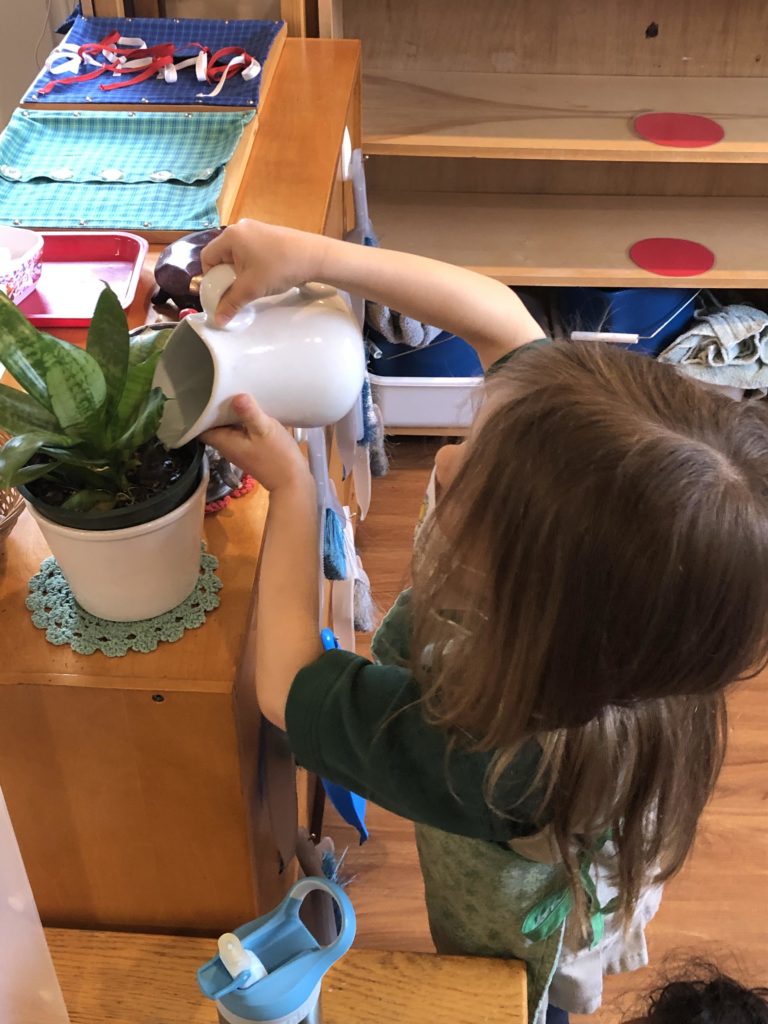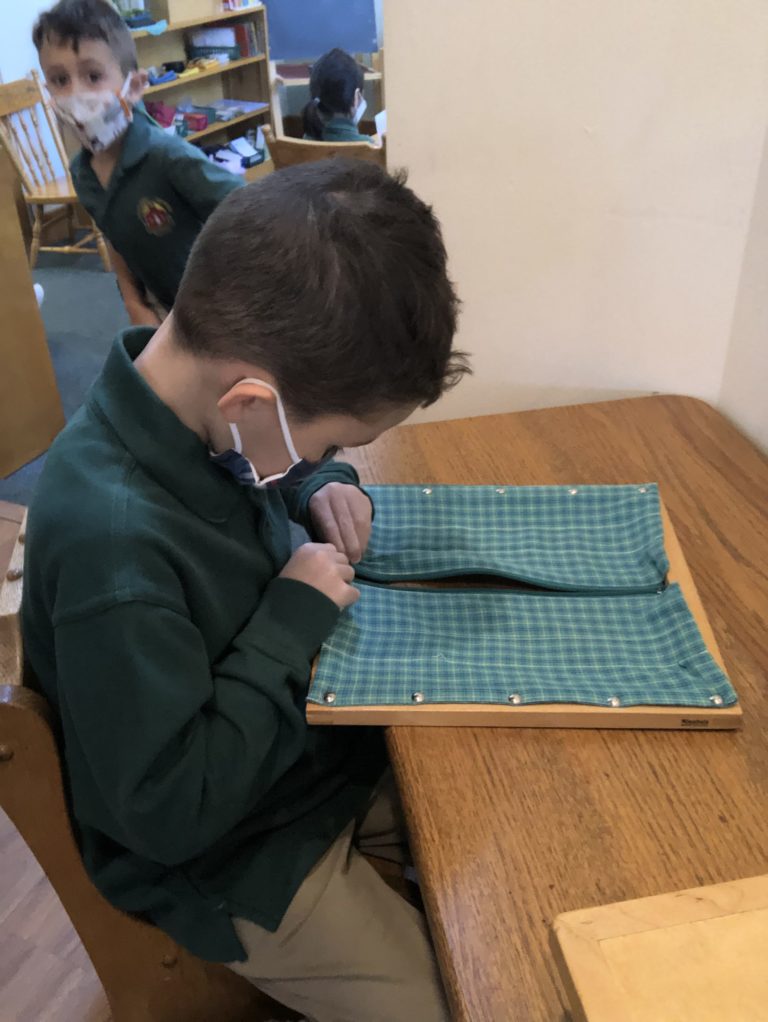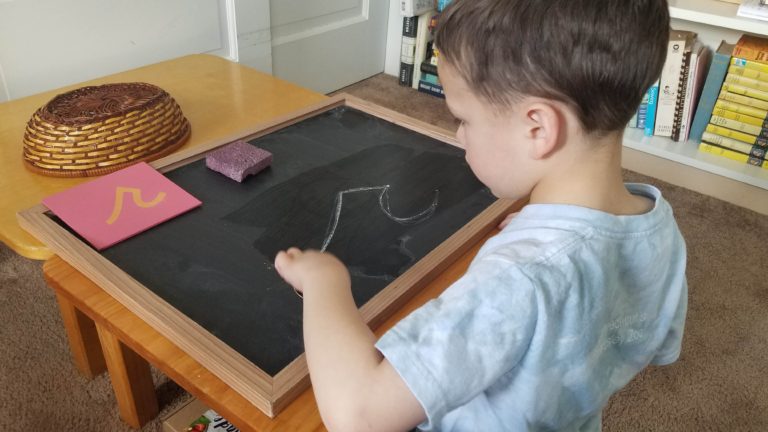Our classroom is busily buzzing with excitement and wonderful work. Many of the children are working on a variety of lessons in each area of the curriculum. You will observe children working on practical life activities such as food preparation for banana slicing, apple cutting, strawberry slicing, orange peeling, and carrot cutting. The children spend a great deal of time focusing on all of the five different kinds of pouring for both dry grains and water exercises. They love working on all of the care of our environment lessons as well such as window and chair washing and watering plants. Our sweeping skills are a daily routine usage for all ages as well.


In the sensorial area, the children are developing a variety of skills while using their senses such as matching touching tablets, smelling bottles, and sound bottles. Some of the older students enjoy these activities by matching one item with another similar item from across the room. They can even use a blindfold for developing their sixth sense.
All of the higher academic exercises such as writing, reading, math, and language skills continue to improve for each child and the children just love working with them.
Among all of these lessons, you will discover that the children are constantly developing some wonderful independent skills.
Independence and Responsibility
Responsibility and independence are related in that the more independence a child has the more responsibility he or she acquires. When we look at some of the ways young children can be independent, we can also see how they can learn to be responsible in small increments.
For example, when children come to school, they have possessions that need to be taken in to the classroom such as a lunch box, a coat or sweater, their classroom snack if it is their turn to bring a snack, and even a sleeping bag for our nappers. Obviously, the child cannot carry all of these things at one time, but he can carry one or two of them. Before leaving the car, the parent can say, ”I will help you carry some of your things to the gate. What would you like to carry? I will bring the rest.” If the child needs to take a few trips to the gate in order to bring everything into their classroom, they can easily do so. Not only does this allow the child to be responsible for their possessions, but it also makes it clear that the child is in charge of them by asking which ones they want you to carry.


Now that fall has arrived, you can observe that one of the morning responsibilities children are focusing on is how to take care of their belongings such as hanging up their coats, jackets, and sweaters. Clothing fasteners can be a challenge at first for young children, but once shown how to use them, they can accomplish this task quite easily.
Most jackets, coats, and sweaters have buttons and zippers. Our dressing frame exercises are helping a child to grasp these concepts with the purpose of repetition so that a child gains these skills in no time. However, before purchasing a jacket or coat, try the fasteners or zipper to make sure they are relatively easy to operate. It is amazing how many children’s coats, jackets, and sweaters are made with buttons a little too big for the buttonholes and zippers that are stiff to slide up and down or have a flap to hold back before they can zipper them. Keep in mind if it is too difficult for you to accomplish the task, your child will struggle even more until they can understand all of the little details that must happen to be successful.

